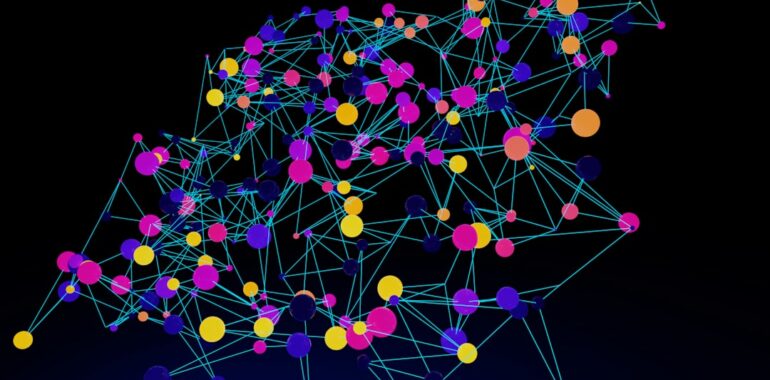Enhance Your Neural Networks with TensorFlow’s Structured Learning Framework

Learn how TensorFlow’s Neural Structured Learning can improve your neural networks by integrating structured signals with input features.
Introduction
In the rapidly evolving field of machine learning, the quest for more accurate and robust models is never-ending. Neural network frameworks play a pivotal role in this journey, providing the tools and structures necessary to design, train, and deploy sophisticated neural networks. Among these frameworks, TensorFlow stands out with its innovative Neural Structured Learning (NSL) framework, which enhances neural networks by integrating structured signals with input features.
What Are Neural Network Frameworks?
Neural network frameworks are software libraries or platforms that provide pre-built components and tools to create, train, and deploy neural networks efficiently. These frameworks simplify complex tasks such as automatic differentiation, model optimization, and scalability, allowing developers and researchers to focus on designing innovative models without getting bogged down by low-level implementation details.
Popular Neural Network Frameworks
- TensorFlow: Developed by Google, TensorFlow is renowned for its flexibility and scalability, making it suitable for both research and production environments.
- PyTorch: Favored for its dynamic computation graph and user-friendly interface, PyTorch is widely used in academic research.
- Keras: Known for its simplicity and ease of use, Keras serves as a high-level API that can run on top of TensorFlow, enabling quick prototyping.
- MXNet: Supported by Apache, MXNet offers efficient performance and scalability, particularly for distributed computing.
Introducing TensorFlow’s Neural Structured Learning
TensorFlow’s Neural Structured Learning (NSL) is a groundbreaking framework that introduces a new paradigm for training neural networks. By leveraging structured signals in addition to traditional feature inputs, NSL enhances the learning process, especially in scenarios where labeled data is scarce.
Key Features of NSL
- Structured Signals Integration: Incorporates both explicit structures (e.g., graphs) and implicit structures (e.g., adversarial perturbations) into the training process.
- Improved Accuracy: Utilizes labeled and unlabeled data, enhancing model performance, particularly when labeled data is limited.
- Robustness Against Attacks: Models trained with adversarial perturbations demonstrate increased resilience against malicious attacks designed to mislead predictions.
- Seamless TensorFlow Integration: Offers easy-to-use APIs and tools that integrate smoothly with existing TensorFlow workflows.
Meta Description: Discover how TensorFlow’s Neural Structured Learning framework can elevate your neural network frameworks by integrating structured signals for enhanced performance and robustness.
Benefits of Using NSL in Neural Network Frameworks
Enhanced Model Accuracy
By incorporating structured signals, NSL allows models to learn from both labeled and unlabeled data. This is particularly beneficial when labeled data is limited, enabling the model to generalize better and improve accuracy.
Increased Robustness
Models trained with adversarial perturbations through NSL are more resistant to malicious attacks. This robustness is crucial in applications where security and reliability are paramount.
Flexibility and Scalability
NSL’s integration with TensorFlow ensures that it can scale efficiently across different hardware configurations and accommodate various model architectures, from simple feedforward networks to complex deep learning models.
Simplified Training Process
The easy-to-use APIs and comprehensive tools provided by NSL streamline the training process, reducing the complexity involved in integrating structured signals and allowing developers to focus on model innovation.
How to Implement NSL with TensorFlow
Implementing Neural Structured Learning in TensorFlow is straightforward, thanks to the framework’s intuitive APIs and comprehensive documentation. Here’s a brief overview of the implementation process:
1. Install TensorFlow and NSL
Begin by installing TensorFlow and the NSL library. Ensure that you have the latest versions to access all features and tools.
pip install tensorflow
pip install neural-structured-learning
2. Prepare Your Data
Load and preprocess your data as usual. NSL works seamlessly with labeled and unlabeled data, enhancing the training process.
import tensorflow as tf
import neural_structured_learning as nsl
(x_train, y_train), (x_test, y_test) = tf.keras.datasets.mnist.load_data()
x_train, x_test = x_train / 255.0, x_test / 255.0
3. Create and Configure Your Model
Define your model architecture using Keras APIs and wrap it with NSL configurations to include structured signals.
model = tf.keras.Sequential([
tf.keras.Input(shape=(28, 28), name='feature'),
tf.keras.layers.Flatten(),
tf.keras.layers.Dense(128, activation=tf.nn.relu),
tf.keras.layers.Dense(10, activation=tf.nn.softmax)
])
adv_config = nsl.configs.make_adv_reg_config(
multiplier=0.2,
adv_step_size=0.05
)
adv_model = nsl.keras.AdversarialRegularization(model, adv_config=adv_config)
4. Compile, Train, and Evaluate
Compile the model with your preferred optimizer and loss function, then proceed to train and evaluate its performance.
adv_model.compile(
optimizer='adam',
loss='sparse_categorical_crossentropy',
metrics=['accuracy']
)
adv_model.fit(
{'feature': x_train, 'label': y_train},
batch_size=32,
epochs=5
)
adv_model.evaluate({'feature': x_test, 'label': y_test})
5. Explore Advanced Features
NSL also supports neural graph learning and adversarial learning, enabling even more sophisticated training regimes.
Real-World Applications of Neural Structured Learning
The versatility of Neural Network Frameworks like TensorFlow’s NSL extends across various industries and applications:
- Healthcare: Enhancing diagnostic models by leveraging structured patient data.
- Finance: Improving fraud detection systems with robust and accurate models.
- Autonomous Vehicles: Developing reliable perception systems resistant to adversarial attacks.
- Natural Language Processing: Fine-tuning language models with structured contextual information.
Conclusion
TensorFlow’s Neural Structured Learning framework represents a significant advancement in neural network frameworks, offering enhanced accuracy, robustness, and flexibility. By integrating structured signals into the training process, NSL empowers developers and researchers to build more sophisticated and reliable models, addressing some of the most pressing challenges in machine learning today.
Elevate your machine learning projects and stay ahead in the AI-driven landscape by leveraging the power of TensorFlow’s NSL framework.
Are you ready to take your AI and machine learning skills to the next level? Join GenAI.London today and empower your learning journey with our comprehensive resources and vibrant community!





